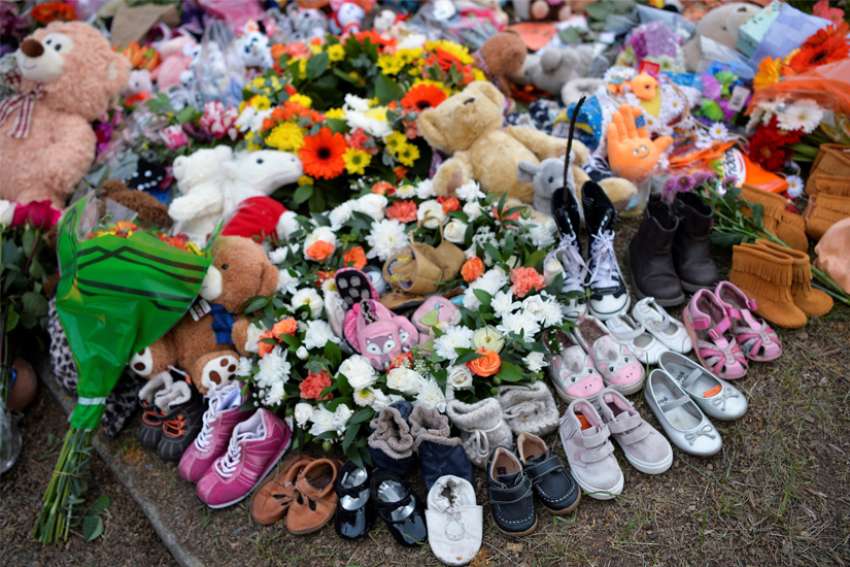Perhaps because we have been conditioned by advertising, we sometimes reach conclusions by word and image association rather than by logic. Graves are associated with death, and death inspires horror. As a result, many have concluded the graves are evidence of something horrible in the residential schools.
There have also been accusations of grievous offences by the school staff. Whatever is concluded from other sources, the presence of graves should not be taken as evidence of wrongdoing.
The residential school policy was mistaken. Staff, often perhaps unknowingly, did great harm by following bad policy. Some individual staff members were guilty of serious offences against the students. But does the presence of graves at residential schools provide evidence personnel deliberately caused the death of students buried in those graves?
The number of graves has shocked people. The assessment for the residential school in Kamloops seems to be about 215. It was one of the larger Aboriginal residential schools in Canada; enrolment reached a high of about 500 around 1950. The Kamloops grave site probably contains graves of persons who were not students in the school. Still, the number of students buried there was probably not much below 215.
That’s high enough to cause alarm. Why did so many students die at the school? Did they die of malnutrition? Abuse? Staff have even been accused of murder. Let’s consider the historical context.
The Kamloops school operated from 1890 to 1978. Although present-day mortality of school-age youth is extremely low, it was not so during most of the history of the residential schools. For tuberculosis alone, the 1924 Canadian death rate was about 84 per 100,000 people. By 1948, it was still about 46 per 100,000.
Today two deaths a year at a school the size of the Kamloops school would surprise people, but it would not have been unusual during most of the school’s history. It would have been helpful had the Report of the Truth and Reconciliation Committee compared the number of deaths in residential schools to those for the public at large, and for Aboriginal children on reserves.
Questions have also been raised about multiple burials occurring at the school rather than remains being returned to students’ homes. The practice then for transporting a body respectfully might involve bringing it to a train by a funeral home vehicle, transporting it by rail to the station nearest the family home, having it picked up by a vehicle supplied by another funeral home, and brought for the funeral or burial. When transport by rail was not practical, the body might be brought all the way by a funeral home vehicle. In any case, it would have been too costly for many families.
Most news reports include the information that graves were “unmarked.” Presumably, this means there were no crosses or headstones. It is highly unlikely there were ever stone markers. Wooden crosses would have deteriorated and been removed as eyesores. The absence of markers, though disconcerting, does not prove willful negligence. Any negligence was probably perpetrated by people long after the burial.
Occasionally Indigenous Canadians have objected to pipelines or other incursions across territories containing burial places. I have observed one such burial ground that had no markers, and it never crossed my mind this indicated lack of respect by the Indigenous people. When the media state that graves were “discovered” on the grounds of the Kamloops residential school, people assume graves were deliberately hidden. I have seen no evidence of this.
My intention here is to defend the majority of teachers at residential schools from serious unfair accusations. An accomplishment of our Western societies is how we protect the innocent from false accusations. Unfortunately, those who staffed residential schools have been subjected to trial by public opinion.
Apart from ruining reputations without valid evidence, which is not a minor offence, the blackening of reputations of teachers at residential schools has been the prelude to demands for monetary compensation. Those expected to pay, mainly Catholic churchgoers, have no connection with the supposed crime other than belonging to the same Church as the supposed perpetrators.
To those so alarmed by the publicity surrounding the graves that they contemplate breaking their connection with the Catholic Church, such a life-altering decision based on an error would be tragic in the Shakespearean sense: a disaster resulting not from chance but from mistaken human choice.
(Fr. Gallagher is a retired moral theologian. Versions of this article have appeared in The B.C. Catholic and Catholic Insight.)


